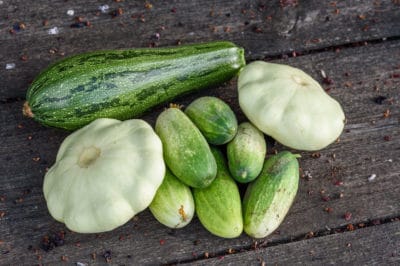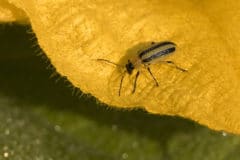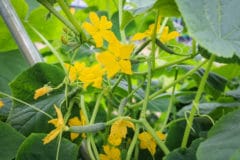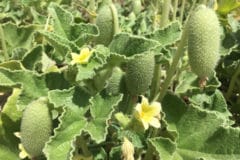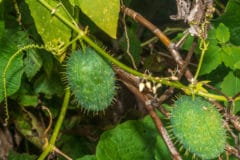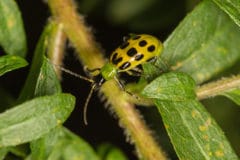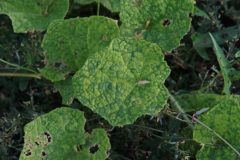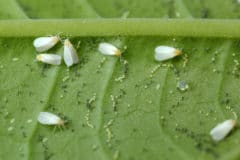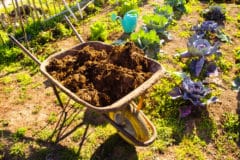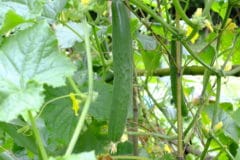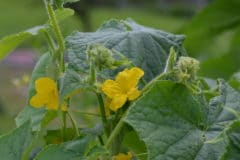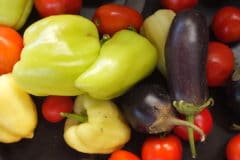Fruits, Veggies, or Both?
Technically, what you harvest from plants of the Cucurbitaceae family — known non-botanically as the Cucumber or Gourd family — is both fruit and vegetable. Why?
- Botanists who study plants define their fruit as what develops from a pollinated flower and contains seeds. Cukes, gourds, squashes and melons all meet that definition.
- Horticulturists classify plants as either woody or herbaceous. To them, woody plants are the fruit producers; herbaceous plants, including cucurbits, produce veggies.
It’s really that simple. So whether you call your cukes, cantaloupes, gourds and zucchinis fruits or vegetables, at least some of the experts agree with you!
Cucurbit Traits
All cucurbits share these common traits:
- They grow as vines. Some, such as summer squashes, are naturally short and dense, while others, such as ‘Klondike Striped’ watermelons, can stretch more than 25 feet. Cucumbers vary from container-sized to a 610-square foot monster from Disney’s Epcot Center greenhouse.
- They have five-petaled, orange or yellow trumpet flowers. Most cucurbits are monoecious, bearing both male and female flowers. The female flowers have tiny, undeveloped fruit at their bases.
- Wild cucurbits contain cucurbitacins, bitter-tasting compounds that discourage nibbling by hungry animals. Cucurbitacins have largely been bred out of most domesticated cultivars.
- All cucurbit species are vulnerable to several different mosaic viruses, including the cucumber, zucchini, squash, watermelon and tobacco ringspot mosaic viruses.
- Their major pests include cucumber beetles, aphids and squash bugs. Installing floating row covers over your garden bed is the most effective way to keep these insects at bay.
Curcubit Growing Conditions
Cucurbits grow best from seeds planted directly in the soil. They need at least six hours of daily sun and rich, well-drained soil. For the best harvest, amend your soil with organic compost before planting. Provide 1 inch of water weekly, delivered slowly and deeply with a soaker hose or drip system. Increase that to 2 inches during prolonged dry weather.
Expert gardener’s tip: Except for those with very large fruit, most cucurbits benefit from trellising. Set up your trellises before planting, so they won’t damage the plants’ developing roots.
